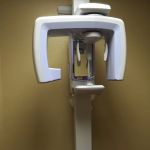Effective Treatments for Receding Gums: What You Need to Know
- 1-Understanding Receding Gums
- 2-Common Causes of Receding Gums
- 3-Effective Treatments for Receding Gums
- 4-Preventative Measures for Healthy Gums
- 5-Consultation and Treatment Options
1. Understanding Receding Gums
Receding gums occur when the gum tissue that surrounds the teeth pulls back or wears away, exposing more of the tooth or its root. This can lead to increased sensitivity, tooth decay, and in severe cases, tooth loss. Receding gums are a common dental problem, affecting many adults, but the good news is that there are effective treatments available to address this condition.
2. Common Causes of Receding Gums
Several factors can contribute to gum recession, including:
- Poor oral hygiene: Neglecting proper brushing and flossing can lead to plaque buildup and gum disease, which can cause gums to recede.
- Genetics: Some people are more prone to receding gums due to their genetic makeup.
- Aging: As we age, gum recession becomes more common due to long-term wear on the gums.
- Hormonal changes: Changes during pregnancy, menopause, or puberty can increase the risk of gum recession.
- Brushing too hard: Brushing your teeth with excessive force or using a hard-bristled toothbrush can damage your gums over time.
3. Effective Treatments for Receding Gums
If you’re experiencing receding gums, the following treatments can help restore gum health and prevent further damage:
Non-Surgical Treatments
1. Scaling and Root Planing: A deep cleaning procedure where the dentist removes plaque and tartar from below the gum line, which helps the gums reattach to the teeth.
2. Antibiotic Treatments: Dentists may recommend antibiotics or antimicrobial treatments to eliminate bacteria that contribute to gum disease.
3. Laser Therapy: Laser treatment is a minimally invasive option to reduce bacteria, promote healing, and help regenerate gum tissue.
Surgical Treatments
In more severe cases, surgical intervention may be necessary to restore gum tissue:
1. Gum Grafting: Tissue is taken from another area of your mouth or from a donor source to cover exposed tooth roots.
2. Pedicle Graft: In this procedure, the gum tissue near the recession site is repositioned to cover the exposed tooth root.
4. Preventative Measures for Healthy Gums
While treatments can help address gum recession, prevention is always better than cure. Here are some tips to maintain healthy gums:
- Brush your teeth gently: Use a soft-bristled toothbrush and avoid brushing too hard.
- Floss daily: Flossing helps remove plaque and debris between your teeth where your toothbrush can't reach.
- Regular dental check-ups: Regular visits to the dentist for cleanings and exams can help catch early signs of gum disease.
- Avoid tobacco products: Smoking and chewing tobacco can increase your risk of gum disease and recession.
5. Consultation and Treatment Options
If you notice symptoms of gum recession, such as increased tooth sensitivity or visible tooth roots, it’s essential to consult with a dentist or periodontist. They will evaluate your gum health and recommend the best course of action, whether it be non-surgical treatments or a more advanced surgical procedure.
It’s crucial to seek professional help early on to prevent further damage and protect your oral health. Don't wait for your symptoms to worsen—take action today!
If you’re looking for effective treatments for receding gums, we recommend scheduling a consultation with a specialist who can guide you through the best options for your specific condition.







 Family Health Centers of Southern Indiana3.0 (52 review)
Family Health Centers of Southern Indiana3.0 (52 review) Cal Dental of Van Nuys4.0 (109 review)
Cal Dental of Van Nuys4.0 (109 review) Dynamic Dental & Orthodontics4.0 (347 review)
Dynamic Dental & Orthodontics4.0 (347 review) Dr Donnelly Patrick5.0 (43 review)
Dr Donnelly Patrick5.0 (43 review) Round Lake Dental4.0 (115 review)
Round Lake Dental4.0 (115 review) Batavia Family Dental: Korpan Kenneth A DDS4.0 (75 review)
Batavia Family Dental: Korpan Kenneth A DDS4.0 (75 review) The Importance of Oral Health Education During Pregnancy for a Healthy Pregnancy
The Importance of Oral Health Education During Pregnancy for a Healthy Pregnancy Best Tips for Brushing Your Teeth Properly for Healthy Gums: Essential Techniques for Oral Health
Best Tips for Brushing Your Teeth Properly for Healthy Gums: Essential Techniques for Oral Health Why Skipping Dental Checkups Can Lead to Bigger Oral Health Problems
Why Skipping Dental Checkups Can Lead to Bigger Oral Health Problems Advantages of Porcelain Dental Restorations
Advantages of Porcelain Dental Restorations How Can Diabetes Cause Tooth and Gum Problems? Preventing and Managing Oral Health Issues
How Can Diabetes Cause Tooth and Gum Problems? Preventing and Managing Oral Health Issues Healthy Habits for Promoting Good Oral Health and Hygiene: Tips for a Healthy Smile
Healthy Habits for Promoting Good Oral Health and Hygiene: Tips for a Healthy Smile